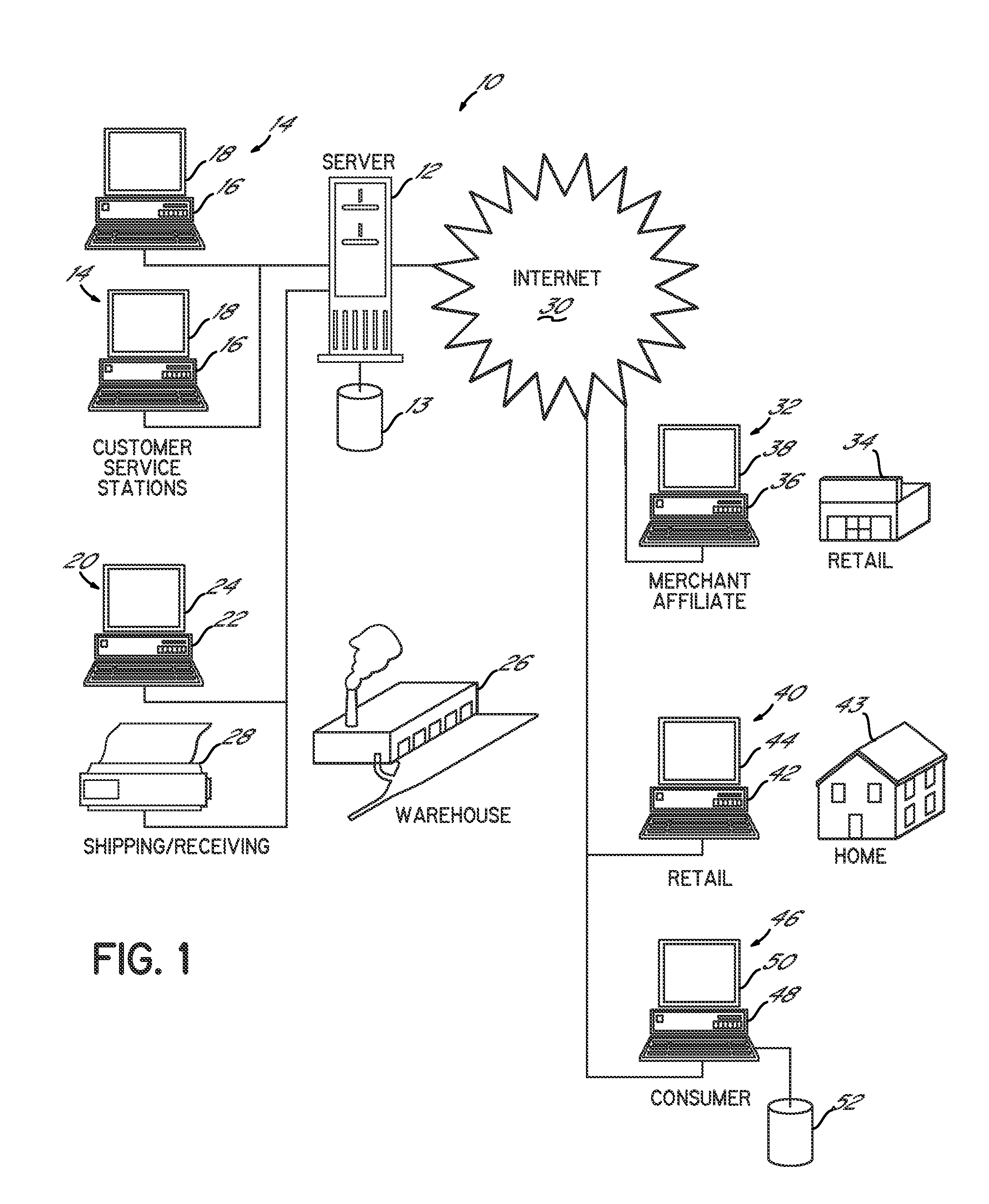Merchant-Affiliated Direct Wholesale Marketing and Fulfillment System
a direct wholesale and fulfillment system technology, applied in the field of management information systems, can solve the problems of unsatisfactory use of catalogs, substantial overhead costs in the process of selling at retail, and reduced inventory of products, so as to achieve accurate delivery times and reduce available inventory for products.
- Summary
- Abstract
- Description
- Claims
- Application Information
AI Technical Summary
Benefits of technology
Problems solved by technology
Method used
Image
Examples
Embodiment Construction
[0052]Referring to FIG. 1, the major components of a merchant affiliated direct marketing system 10 can be seen. At the heart of system 10 is a computer server 12 programmed to carry out methods of the present invention and generally oversee the operation of the entire system 10. Computer server 12 is a high capacity network server such as are commercially available from a variety of vendors. Server 12 accesses a storage device 13 which may be a solid state memory, dynamic access storage device (DASD, i.e., hard disk or hard disk array), or other storage device. Sever 12 and storage device 13 must have sufficient processing and storage capacity to handle the volume of business that is conducted by the entity owning server 12 following the methods of the present invention. It will be appreciated that for different applications involving different business volumes, server 12 may be configured as a single processor server or may be configured as a network of servers each operating in c...
PUM
 Login to View More
Login to View More Abstract
Description
Claims
Application Information
 Login to View More
Login to View More - R&D
- Intellectual Property
- Life Sciences
- Materials
- Tech Scout
- Unparalleled Data Quality
- Higher Quality Content
- 60% Fewer Hallucinations
Browse by: Latest US Patents, China's latest patents, Technical Efficacy Thesaurus, Application Domain, Technology Topic, Popular Technical Reports.
© 2025 PatSnap. All rights reserved.Legal|Privacy policy|Modern Slavery Act Transparency Statement|Sitemap|About US| Contact US: help@patsnap.com



